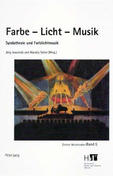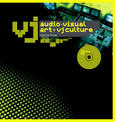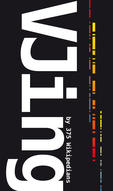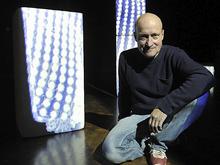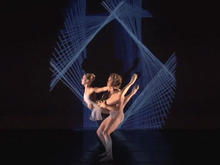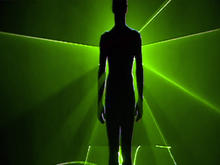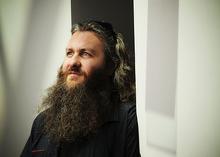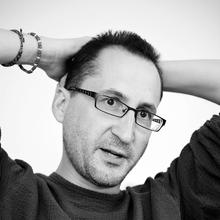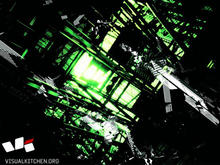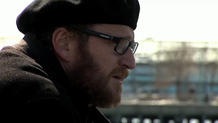Glow
(2006)is a spectacular 27-minute duet for body and technology, an essay on the relationship of dance and cutting-edge software technology by German software artist Frieder Weiss and Australian choreographer Gideon Obarzanek.
The projections react to the dancer's moving body, graphically illuminating and extending it. Glow subtly explores the power structures between man and machine and follows the life-cycle of a new kind of cyborg - from the beauty of a supernaturally, sparkling foetus and the adolescence of logic and lines, to a body hunted in a threatening world of shadows.
Glow works with a system consisting of an infrared video camera and a PC with the Kalypso software running. Kalypso is a not yet published video tracking software by Frieder Weiss. It is using current tracking algorithms of various kinds and is specifically designed for theatre use. The development of the software is part of a series of performances called ‘Perceivable Bodies’, generating highly aesthetical images which are still very close to the body image. The software also allows flexible structuring of the performance time, images are morphed and blended into each other. Special focus is on the development of a performance time morphology which is often hard to do with other graphical programming environments.
Premiered at the Melbourne Festival in 2006.
Source: Frieder Weiss
Choreographers Notes
Frieder Weiss and I first met at the Monaco Dance Forum at the end of 2004 and discussed the use of a data projector for lighting a moving body. In late 2005 in Australia we tested various relationships between a moving body and motion graphics using an infrared camera tracking system.
With a better understanding of the system’s capabilities, its possible applications and further potential, the dancers and I have attempted in the movement to create a type of 'biotech fiction', shifting the body into other imaginary sensual and grotesque creature states. The relationship of the digital pixel environment to the performer varies from being an illustrative extended motion of their movement, a visual expression of internal states, and also a self-contained animated habitat.
The relationship between the dancer and the graphics describe two entities that are in phase and at one with each other. Initially, only momentary fractures undermine this alliance, however as the work develops so does the unravelling and ultimate rupturing of these two elements.
In the opening scenes, Glow’s high commitment to its aesthetics makes it visually very impressive. What may be more interesting however is the hint of a creature/person beginning to reveal itself from within this kaleidoscope system. The voice in the opening or the subtle shuddering of the body later on alludes to the possibility of something else beyond the clearly defined work of beautiful shapes and virtuosic execution.
As the work develops so does the initial responsive relationship of light and graphics to the moving body. At one point the dancer’s effect on a graphic pattern gives us the impression that all particles are related and that the body has merged into a single entity with the system. Later, projected shadow figures expelled by the performer take on a dramatic form of their own and influence the behaviour response of the dancer. Approaching a climactic end, there is an intense physical process that ultimately leads to the separation between the body of the performer and its projected image.
The seamless joint venture forged in Glow between a moving body and tracking light and images ultimately reveals itself as flawed and in the end irreconcilable. The work expresses a desire to discard or escape elements from within ourselves and this can be seen as a visual metaphor for our own constant struggle with our primitive state of duality.
Source: Frieder Weiss
